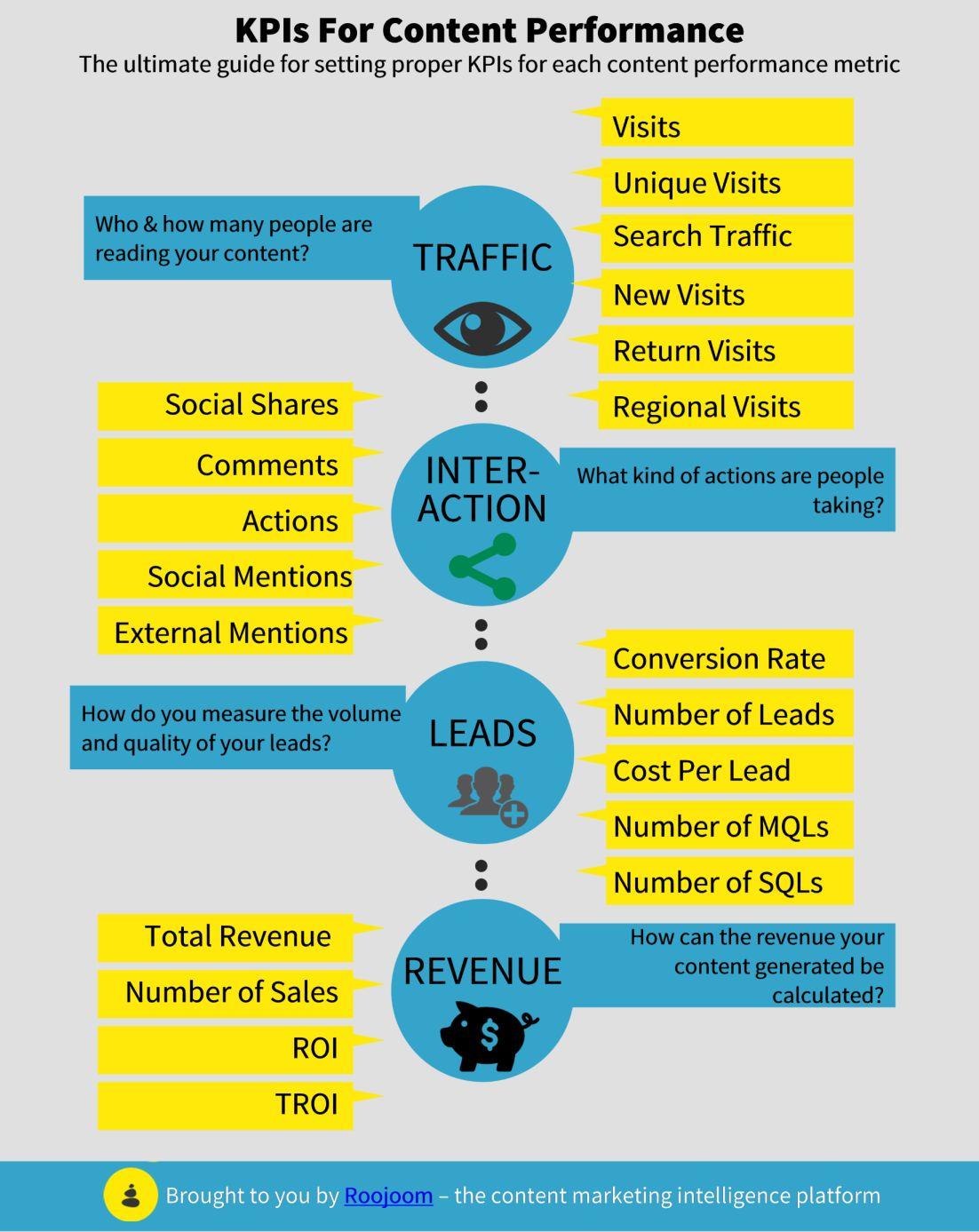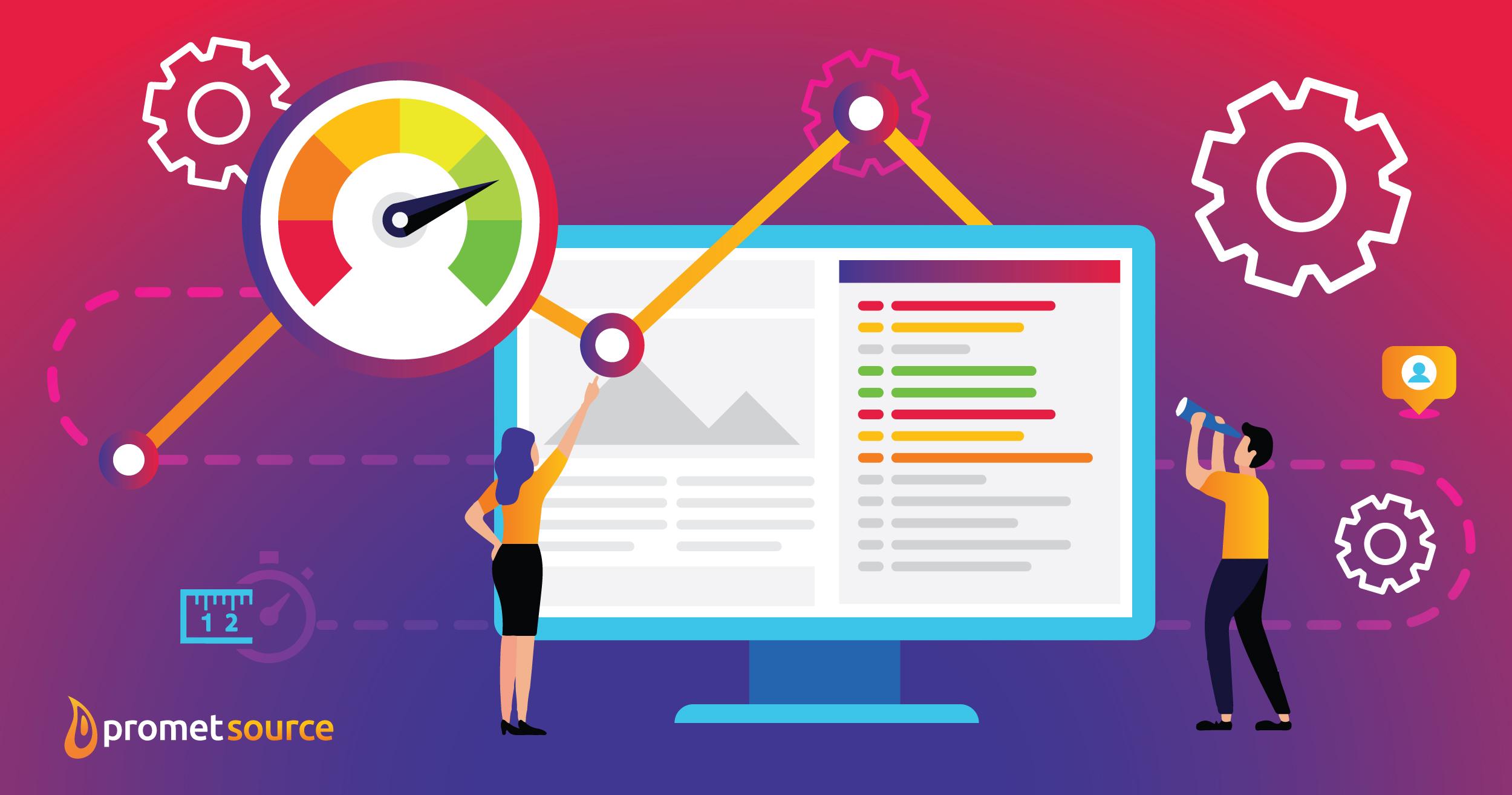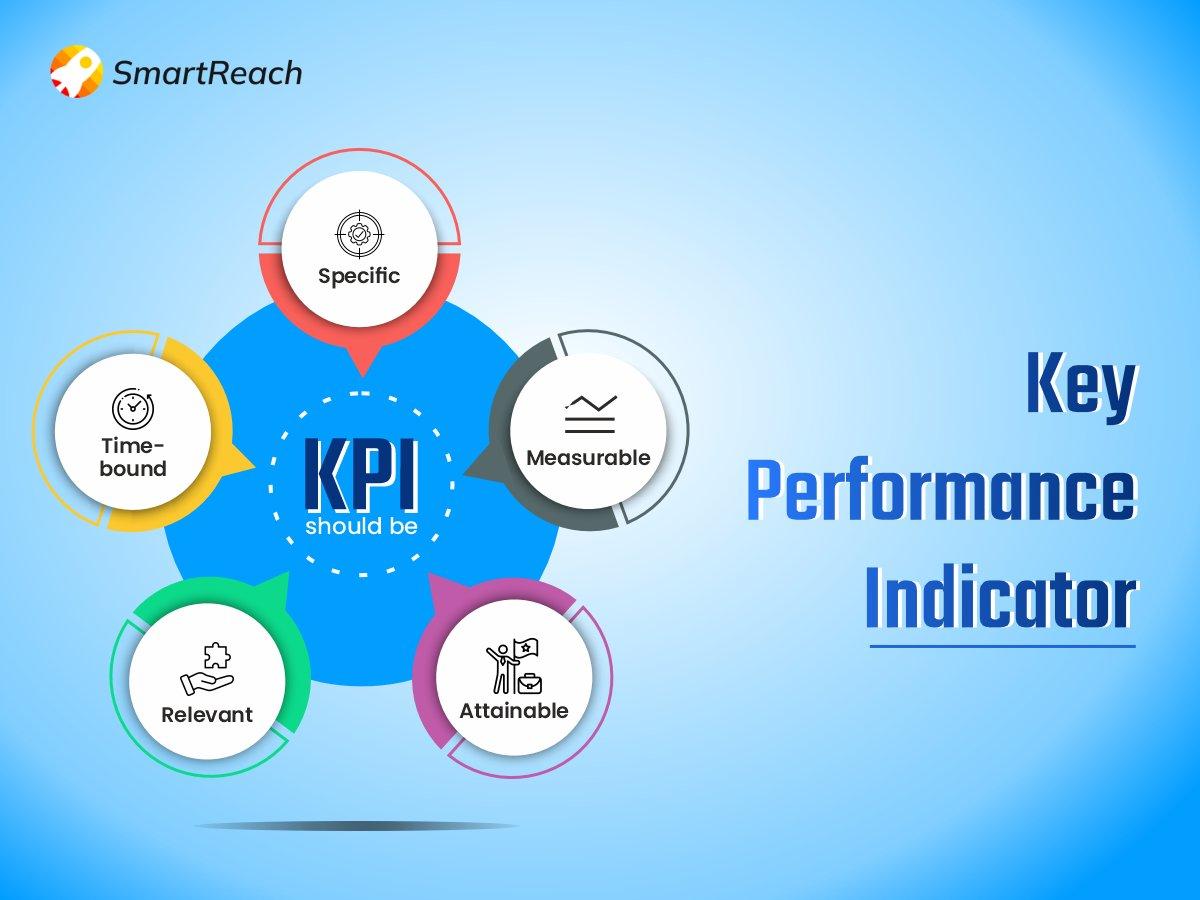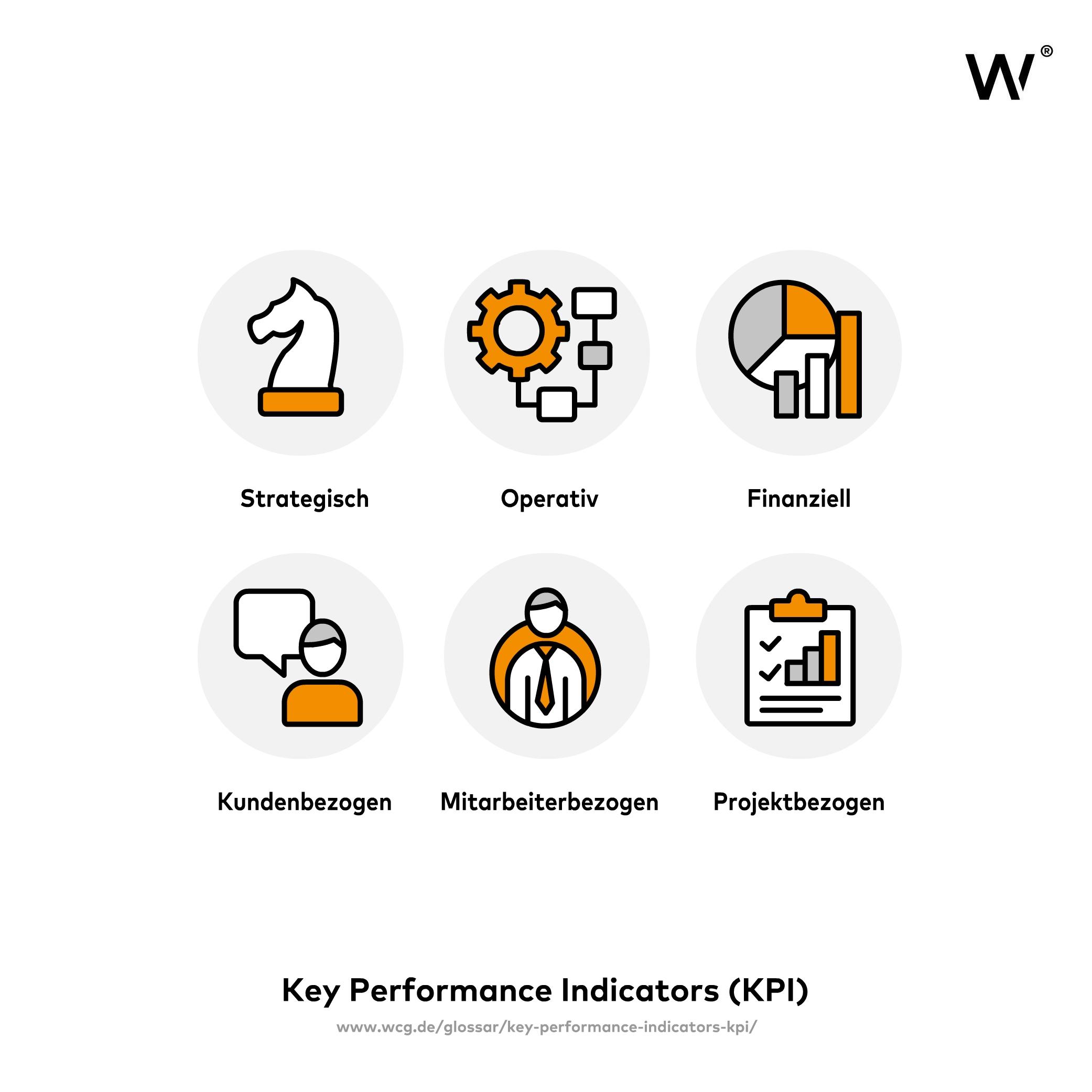Curious about website KPIs? They’re your digital compass! Key Performance Indicators help you measure success and optimize performance. Focus on metrics like traffic, bounce rate, and conversion rate to unlock your site’s true potential. Track them and thrive!
What Is a Website KPI and Which Ones Should I Track?
In today’s digital landscape, having a website is just the beginning. Whether you’re a seasoned marketer or a small business owner, understanding how your website performs is crucial to achieving your goals. Enter the world of Key Performance Indicators, or KPIs—those important metrics that can make or break your online success. But what exactly is a website KPI, and why should you care? Think of KPIs as your website’s vital signs; they provide insights into how well your site is meeting its objectives. In this article, we’ll dive into the essential KPIs you should be tracking to not only gauge your website’s performance but also to drive meaningful improvements. Ready to unlock the secrets of your website’s potential? Let’s get started!
What Exactly Is a Website KPI and Why Should You Care
In the ever-evolving digital landscape, understanding the metrics that define your website’s performance is crucial. A website KPI (Key Performance Indicator) serves as a measurable value that demonstrates how effectively your site is achieving business objectives. By focusing on these indicators, you can gain insights into user behavior, assess marketing strategies, and ultimately drive growth.
So, why should you care about these KPIs? The answer is simple: they provide a roadmap for success. By tracking specific metrics, you can:
- Identify Areas for Improvement: If a particular KPI is lagging, it signals a need for adjustment, whether it’s in content, design, or user experience.
- Make Data-Driven Decisions: Relying on gut feelings can lead to missteps. KPIs provide tangible data to guide your choices.
- Measure ROI: Understanding which KPIs correlate with revenue or customer acquisition helps you allocate resources more effectively.
- Set Clear Goals: KPIs help define success, allowing you to create targeted strategies that drive results.
When assessing which KPIs to track, consider focusing on these key areas:
| KPI | Description | Why It Matters |
|---|---|---|
| Traffic Sources | Identifies where your visitors are coming from. | Helps assess the effectiveness of your marketing channels. |
| Bounce Rate | Percentage of visitors who leave without engaging. | Indicates the relevancy and quality of your content. |
| Conversion Rate | Percentage of visitors completing a desired action. | Measures your site’s effectiveness in driving sales or leads. |
| Average Session Duration | How long users spend on your site. | A longer duration often reflects engaging content. |
Ultimately, KPIs act as your dashboard, providing a snapshot of your website’s health. By keeping a close eye on these metrics, you can better understand your audience and adapt your strategies accordingly. In a world where online presence can make or break a business, having clarity on your KPIs is not just beneficial—it’s essential. Embrace the power of analytics and let your KPIs guide you toward success!

The Importance of Tracking Website Performance Metrics
In the digital landscape, understanding how your website performs is akin to having a GPS for your business. Without it, you’re navigating through a maze without a map, risking lost opportunities and misinformed decisions. Tracking website performance metrics allows you to measure the effectiveness of your online presence and refine your strategies accordingly. The insights you gain can drive growth, enhance user experience, and ultimately lead to better conversions.
Key performance indicators (KPIs) serve as a compass, guiding your website optimization efforts. By monitoring these metrics, you can pinpoint what’s working and what’s not. Here are some essential metrics to keep an eye on:
- Page Load Time: A slow website can deter visitors. Aim for a load time under three seconds to keep users engaged.
- Bounce Rate: This tells you what percentage of people leave your site after viewing only one page. A high bounce rate may indicate irrelevant content or poor user experience.
- Conversion Rate: Measure how many visitors complete a desired action, like signing up for a newsletter or making a purchase. This metric highlights your site’s effectiveness in achieving business goals.
- Traffic Sources: Understanding where your visitors are coming from helps you allocate your marketing efforts wisely. Are they finding you through search engines, social media, or referrals?
- Average Session Duration: This metric shows how long visitors are staying on your site. Longer durations typically suggest that users find your content engaging.
To visualize these metrics effectively, consider using tables that provide a snapshot of your performance data. Below is a simple example of how you might organize these KPIs:
| Metric | Current Value | Goal |
|---|---|---|
| Page Load Time | 4.2 seconds | Under 3 seconds |
| Bounce Rate | 60% | Under 40% |
| Conversion Rate | 2.5% | 5% |
| Average Session Duration | 1 minute 30 seconds | 3 minutes |
Regularly reviewing these metrics not only helps in identifying trends but also provides actionable insights. If your page load time is higher than desired, you might need to optimize images or streamline your code. A high bounce rate could signal a need for better-targeted content or an improved layout. Each metric tells a story, and it’s up to you to interpret the signs and take action.
In today’s competitive environment, neglecting to track website performance is like sailing a ship without a sail. The metrics you choose to focus on can empower you to make data-driven decisions that amplify your website’s effectiveness. By investing time in analyzing these indicators, you’re not just monitoring performance—you’re setting the stage for your website’s success and your business’s growth.

Key Performance Indicators You Should Be Monitoring
When it comes to measuring the success of your website, certain metrics can provide invaluable insight into how well you’re meeting your goals. Here are some key performance indicators (KPIs) you should keep an eye on:
- Traffic Sources: Understanding where your visitors come from can help you allocate resources effectively. Whether it’s organic search, social media, or direct visits, knowing the source can guide your marketing strategies.
- Bounce Rate: A high bounce rate may indicate that users aren’t finding what they’re looking for. Aim for a lower bounce rate by improving content relevance and site usability.
- Average Session Duration: This metric tells you how long visitors stay on your site. A longer session duration typically means users are engaged with your content.
- Conversion Rate: Define what a conversion means for your site—whether it’s making a purchase, signing up for a newsletter, or filling out a contact form. Monitoring this KPI is crucial for assessing the effectiveness of your calls to action.
- Page Load Time: Speed matters! If your site takes too long to load, users may leave before it fully appears. Aim for a load time under three seconds to keep bounce rates low.
To help visualize these metrics, consider tracking them in a simple table format:
| KPI | Current Value | Goal |
|---|---|---|
| Traffic Sources | 65% Organic | 70% Organic |
| Bounce Rate | 55% | Under 40% |
| Average Session Duration | 2:30 mins | 3:00 mins |
| Conversion Rate | 3% | 5% |
| Page Load Time | 4 seconds | Under 3 seconds |
By consistently monitoring these KPIs, you’ll gain a clearer picture of your website’s performance and make informed decisions to enhance user experience and achieve your objectives. Remember, the key to success lies in not just tracking these metrics, but also using them to drive actionable insights!

How to Choose the Right KPIs for Your Business Goals
When it comes to measuring the success of your website, selecting the right Key Performance Indicators (KPIs) is crucial. These metrics not only provide insights into your performance but also align your digital strategy with your overall business goals. To make this selection process easier, consider the following factors:
- Relevance: Choose KPIs that directly relate to your business objectives. For instance, if your goal is to increase sales, focus on metrics like conversion rate and revenue per visitor.
- Actionability: Your selected KPIs should guide your actions. Look for metrics that can prompt changes in strategy, such as bounce rates or cart abandonment rates.
- Measurability: Opt for KPIs that can be easily tracked and measured. This could involve website analytics tools that provide real-time data.
- Specificity: The more specific your KPIs, the better. Instead of a broad goal like “increase traffic,” aim for “increase organic traffic from search engines by 20% within six months.”
Another important aspect to consider is which KPIs are the most suitable for your type of business. Here’s a brief overview of essential website KPIs to track:
| Website KPI | Description |
|---|---|
| Traffic Sources | Identifies where your visitors are coming from, whether it’s organic search, social media, or direct visits. |
| Bounce Rate | The percentage of visitors who leave after viewing only one page, indicating engagement levels. |
| Conversion Rate | The percentage of visitors who complete a desired action, such as making a purchase or signing up for a newsletter. |
| Average Session Duration | The average time a user spends on your site, reflecting the quality of your content. |
| Cart Abandonment Rate | The percentage of users who add products to their cart but do not complete the purchase. |
In addition to these KPIs, it’s vital to regularly review and adjust your metrics based on your evolving business landscape. Trends change, and so should your focus areas. Set up quarterly reviews to assess whether your KPIs still align with your business objectives or if new goals have emerged.
remember that the best KPIs are not set in stone. They should evolve as your business grows. Engage with your team to gather insights, and don’t hesitate to experiment with new metrics that could provide a fresh perspective on your performance. By carefully selecting and monitoring the right KPIs, you can ensure your website remains a powerful tool in achieving your business goals.
Understanding Traffic Metrics: What They Reveal About Your Audience
When it comes to understanding your audience, traffic metrics serve as the illuminating beacon guiding your content strategy. These metrics not only reveal how many visitors are landing on your site but also provide deeper insights into who those visitors are, how they interact with your content, and what drives their engagement.
One of the most revealing metrics is page views. This number indicates how often a particular page has been viewed, giving you a clear picture of which content resonates most with your audience. If a specific blog post or product page is racking up views, it might be worth creating more content in that niche or promoting it further.
Another key metric is bounce rate, which measures the percentage of visitors who leave your site after viewing only one page. A high bounce rate can signal that your content isn’t engaging enough or that visitors aren’t finding what they expected. This insight can prompt you to refine your content, improve user experience, or even optimize your landing pages to keep users engaged.
It’s also essential to consider average session duration. This metric tells you how long visitors stay on your site during a single visit. A longer average session duration often indicates that your content is valuable and interesting, while a shorter duration might mean that users are not finding what they’re looking for or that your content isn’t compelling enough to hold their attention.
To give you a clearer picture, let’s summarize some essential traffic metrics you should keep an eye on:
| Traffic Metric | What It Reveals |
|---|---|
| Page Views | Popularity of specific content |
| Bounce Rate | Content engagement level |
| Average Session Duration | Content value and interest |
| Traffic Sources | Where your audience is coming from |
Furthermore, understanding traffic sources can provide valuable insights into where your audience is coming from—be it organic search, social media, referrals, or direct visits. This knowledge enables you to tailor your marketing strategies more effectively, focusing on channels that yield the best results.
by diving into these metrics, you’ll not only gain a better understanding of your audience but also enhance your website’s performance and content strategy. Keep a pulse on these key indicators, and you’ll be well on your way to creating a tailored experience that engages and retains your visitors.
Engagement Metrics That Matter: Keeping Visitors Hooked
Engagement metrics are the lifeblood of any website striving to keep visitors coming back for more. Understanding how users interact with your content can give you invaluable insights into what works and what doesn’t. By tracking these metrics, you can tailor your website experience to align with your audience’s preferences, leading to increased retention and conversion rates.
One of the most significant engagement metrics to consider is Average Session Duration. This metric tells you how long visitors are spending on your website. A longer session duration indicates that your content is resonating with your audience. To boost this metric, consider implementing strategies like:
- Creating compelling content that addresses your audience’s needs.
- Utilizing engaging multimedia such as videos and infographics.
- Incorporating interactive elements like quizzes or surveys.
Bounce Rate is another critical metric that reveals how effectively your landing pages are captivating visitors. A high bounce rate may signal that users are not finding what they expect upon arriving at your site. To combat this, consider the following:
- Optimizing page load speeds to minimize frustration.
- Enhancing your site’s design for easier navigation and better aesthetics.
- Crafting clear calls-to-action (CTAs) that guide users to explore further.
Pages per Session is a metric that reflects how many pages visitors view during a single session. Increasing this number can significantly enhance the chances of conversions. To encourage users to explore more of your site, try:
- Implementing related content suggestions at the end of articles.
- Using internal linking strategies to guide users to other relevant pages.
- Creating a visually appealing sitemap to help users navigate effortlessly.
Engagement metrics also encompass social sharing and comments. Tracking how often your content is shared or commented on can give you insights into its relevance and appeal. Here’s a simple table to highlight key metrics you should monitor:
| Metric | Description | Why It Matters |
|---|---|---|
| Average Session Duration | Time spent on your site per visit | Indicates content effectiveness |
| Bounce Rate | Percentage of visitors leaving after one page | Reflects landing page relevance |
| Pages per Session | Average number of pages viewed per visit | Shows user engagement depth |
| Social Shares | How often your content is shared | Measures content virality and reach |
By focusing on these essential engagement metrics, you can create a strategy that entices visitors to stay longer and interact more with your content. In today’s competitive digital landscape, understanding and leveraging these metrics is crucial for building a successful online presence.
Conversion Rates: The Ultimate Measure of Your Websites Success
Conversion rates are not just numbers; they are the pulse of your website’s effectiveness. When you measure how many visitors take a desired action—whether that’s signing up for a newsletter, making a purchase, or filling out a contact form—you’re getting a clear picture of how well your site converts traffic into tangible results. This is a vital part of understanding your overall website performance.
To improve your conversion rates, consider the following key strategies:
- User Experience (UX): Ensure your website is easy to navigate. A cluttered or confusing layout can deter potential conversions.
- Compelling Calls to Action (CTAs): Use action-oriented language and make your CTAs stand out visually. Phrases like “Get Started Now” or “Join Us Today” can motivate users to take action.
- High-Quality Content: Engaging, relevant, and valuable content can build trust, leading to higher conversions. Ensure that your copy resonates with your target audience.
- Mobile Optimization: With a significant amount of web traffic coming from mobile devices, ensuring your site is mobile-friendly is crucial for capturing conversions.
To visualize how these factors interact with conversion rates, here’s a simple table that illustrates the potential impact:
| Website Element | Impact on Conversion Rate |
|---|---|
| User Experience | ↑ 30% |
| Effective CTAs | ↑ 50% |
| Quality Content | ↑ 40% |
| Mobile Optimization | ↑ 25% |
Tracking conversion rates allows you to identify what’s working and what needs improvement. Regularly analyze your site’s performance and make adjustments based on data-driven insights. A/B testing different elements—from headlines to button colors—can help you hone in on what resonates best with your audience.
Ultimately, understanding and optimizing your conversion rates is about creating a seamless journey for your visitors. By focusing on their needs and behaviors, you can transform casual browsers into loyal customers, turning your website into a powerful tool for success.

Tools and Techniques for Tracking Your Website KPIs
To effectively monitor your website’s performance, leveraging the right tools and techniques is crucial. Here are some powerful resources that can help you track your KPIs more efficiently:
- Google Analytics: A must-have for any website owner, Google Analytics provides detailed insights into user behavior, traffic sources, and much more. With customizable dashboards, you can easily track KPIs like conversion rates and average session duration.
- Google Search Console: This tool allows you to monitor your site’s presence in Google search results. It’s perfect for tracking organic traffic and identifying keywords that drive visitors, helping you optimize your content strategy.
- Hotjar: Understanding user behavior is key to improving your website. Hotjar offers heatmaps and session recordings, which help you visualize how visitors interact with your site, allowing you to optimize layouts and enhance user experience.
- SEMrush: While primarily known for SEO, SEMrush also provides insights into your competitors’ performance. By analyzing their KPIs, you can adjust your strategies to stay ahead in your industry.
- Ahrefs: Ahrefs focuses on backlinks and site audits, making it invaluable for tracking your website’s health. With its tools, you can monitor your domain authority and ensure your site stays optimized for search engines.
When it comes to implementation, it’s essential to set up a comprehensive reporting system that brings all your KPIs into one view. Consider using a dashboard tool, like Tableau or Google Data Studio, to visualize your data. These platforms allow you to create customized reports that are easy to read and share with your team.
| Tool | KPI Tracking Capability | Best For |
|---|---|---|
| Google Analytics | User behavior, traffic sources | General website performance |
| Google Search Console | Organic traffic, search keywords | SEO monitoring |
| Hotjar | User interaction, heatmaps | User experience optimization |
| SEMrush | Competitor analysis, SEO | Market positioning |
| Ahrefs | Backlink tracking, site audits | SEO health |
remember that tracking KPIs is not a one-time task. Regularly review your metrics and adjust your strategies accordingly. This proactive approach allows you to stay agile in the ever-changing digital landscape, ensuring your website remains competitive and effective in reaching its goals.

Turning Data Into Action: Making the Most of Your Insights
In today’s digital landscape, understanding your website’s performance is crucial for driving growth and maximizing return on investment. Key Performance Indicators (KPIs) serve as measurable values that help you gauge your website’s success. By tracking the right KPIs, you can turn raw data into actionable insights, ultimately enhancing your decision-making processes.
When determining which KPIs to monitor, consider focusing on metrics that align with your business goals. Here are some essential KPIs to keep an eye on:
- Traffic Sources: Understand where your visitors are coming from—be it organic search, paid ads, social media, or referral links. This insight can help you allocate your marketing resources more effectively.
- Bounce Rate: This metric tells you the percentage of visitors who leave your site after viewing just one page. A high bounce rate may indicate that your content isn’t engaging enough.
- Conversion Rate: Track the percentage of visitors who complete a desired action, such as signing up for a newsletter or making a purchase. This is a direct indicator of your site’s effectiveness in converting visitors into customers.
- Average Session Duration: Measuring how long visitors spend on your site helps you understand engagement levels. The longer they stay, the more likely they are to convert.
- Pages per Session: This KPI reveals how many pages, on average, a visitor views during a single visit. A higher number suggests that users find your content valuable and worth exploring.
Once you’ve identified the right KPIs, it’s time to analyze the data and take action. Utilize tools like Google Analytics to visualize trends and patterns in your data. By regularly reviewing these insights, you can pinpoint areas for improvement and make data-driven decisions.
Consider creating a dashboard that displays your key metrics in real-time. This makes it easier for your team to stay aligned and focused on achieving your objectives. Here’s a simple layout for your KPI dashboard:
| Metric | Current Value | Goal | Status |
|---|---|---|---|
| Traffic Sources | 10,000 visits | 12,000 visits | Needs Improvement |
| Bounce Rate | 60% | 50% | Too High |
| Conversion Rate | 2% | 5% | Underperforming |
| Average Session Duration | 3 minutes | 5 minutes | On Watch |
Transforming data into action isn’t just about tracking numbers; it’s about understanding the story behind those numbers. By continuously refining your strategy based on these insights, you can foster a culture of improvement within your organization. Empower your team to use data as a tool for innovation, and you will see significant benefits in both customer satisfaction and your bottom line.

Regularly Reviewing and Adjusting Your KPIs for Continuous Improvement
In the fast-paced digital landscape, monitoring your Key Performance Indicators (KPIs) isn’t a one-time task—it’s an ongoing journey. Regularly reviewing your KPIs allows you to align your website’s performance with your business goals, ensuring that you are always on the right track. Without a routine check, your strategies may become outdated, leading to missed opportunities for growth and engagement.
Start by establishing a consistent schedule for reviewing your KPIs. Whether it’s monthly, quarterly, or bi-annually, having a defined timeline helps keep your team accountable. During these reviews, ask yourself critical questions:
- Are the KPIs still relevant to your current business objectives?
- What trends can be identified from the data?
- Are there emerging metrics that should be tracked?
As you analyze your data, be open to making adjustments. If a particular KPI is underperforming, dig deeper to understand why. It might be a sign that your content isn’t resonating with your audience, or perhaps your marketing strategies need a refresh. Here’s a simple table to visualize how adjustments can be made based on KPI performance:
| KPI | Current Status | Action Needed |
|---|---|---|
| Organic Traffic | Declining | Revise SEO strategy |
| Conversion Rate | Stable | Test new CTAs |
| Bounce Rate | High | Enhance user experience |
Don’t forget to involve your team in these discussions. Different perspectives can uncover insights that you might overlook. Collaborate to brainstorm innovative strategies that will allow you to tackle challenges head-on and take advantage of new opportunities as they arise. This collaborative approach can lead to a more dynamic and responsive KPI framework tailored to your unique business needs.
remember that the world of digital marketing is always evolving. New technologies, user behaviors, and market conditions can shift overnight. Regularly adjusting your KPIs not only helps in tracking performance but also empowers you to stay ahead of the curve. By fostering a culture of continuous improvement, you position your website—and ultimately your business—for long-term success.
Frequently Asked Questions (FAQ)
Q&A: What Is a Website KPI and Which Ones Should I Track?
Q: What exactly is a KPI when it comes to websites?
A: Great question! KPI stands for Key Performance Indicator. It’s a measurable value that shows how effectively a website is achieving its key business objectives. In simpler terms, KPIs help you understand how well your website is performing and whether it’s meeting your goals—like boosting sales, increasing traffic, or enhancing user engagement.
Q: Why should I track KPIs for my website?
A: Tracking KPIs is crucial because it gives you insight into the health of your website. By monitoring these indicators, you can make informed decisions to optimize your site. It’s like having a compass that guides you toward your business goals, helping you spot areas for improvement and celebrate your successes along the way.
Q: Which KPIs should I be focusing on?
A: Excellent question! The KPIs you track depend on your specific goals, but here are some essential ones to consider:
- Traffic Sources: Understanding where your visitors come from helps you allocate resources effectively.
- Bounce Rate: This indicates the percentage of visitors who leave after viewing only one page. A high bounce rate might signal that your content isn’t engaging or relevant enough.
- Conversion Rate: This KPI shows the percentage of visitors who take a desired action, like making a purchase or signing up for a newsletter. It’s a direct measure of your website’s effectiveness.
- Average Session Duration: This tells you how long visitors are staying on your site. A longer duration usually indicates that users find your content valuable.
- Page Load Time: A fast-loading site is crucial for user experience. If your pages are slow, you risk losing visitors.
- User Engagement Metrics: Metrics like social shares, comments, and repeat visits can give you a sense of how well your audience is connecting with your content.
Q: How often should I review my KPIs?
A: Regularly! Depending on your goals, reviewing your KPIs monthly or quarterly can help you stay on top of your website’s performance. Weekly checks can be valuable too, especially if you’re running time-sensitive campaigns. The key is to be consistent so you can spot trends over time.
Q: What tools can I use to track these KPIs?
A: There are several fantastic tools out there to help you track KPIs. Google Analytics is a popular choice, providing comprehensive data on traffic, behavior, and conversions. Other tools like SEMrush, Ahrefs, and social media analytics platforms can also provide valuable insights depending on your focus areas.
Q: Can I set my own KPIs, or do I have to stick to the standard ones?
A: Absolutely, you can set your own KPIs! While it’s helpful to start with standard KPIs, tailoring your indicators to reflect your specific business objectives can lead to more meaningful insights. Consider what success looks like for you and create KPIs that help you measure that success.
Q: Any final tips for tracking and using KPIs effectively?
A: Definitely! Make sure to establish clear goals first, as this will guide which KPIs are most relevant to track. Also, don’t just collect data—analyze it! Use your findings to make strategic decisions and adjustments to your website. Lastly, remember to keep your KPIs visible to your team. This ensures everyone is aligned and working towards the same objectives. Happy tracking!
The Way Forward
As we wrap up our exploration of website KPIs, it’s clear that tracking the right metrics can be a game-changer for your online presence. By keeping a close eye on the KPIs that matter most to your goals—whether it’s boosting traffic, improving user engagement, or driving conversions—you’re setting yourself up for success.
Remember, it’s not just about collecting data; it’s about using that data to make informed decisions that can elevate your website’s performance. So, take the time to define your objectives, choose the KPIs that align with them, and dive into the numbers. Don’t hesitate to adjust your strategies based on what the data tells you.
In the ever-evolving digital landscape, staying on top of your KPIs will not only help you measure success but also keep you ahead of the competition. So, what are you waiting for? Start tracking those KPIs today, and watch your website transform into a powerful tool for growth and engagement. You’ve got this!





